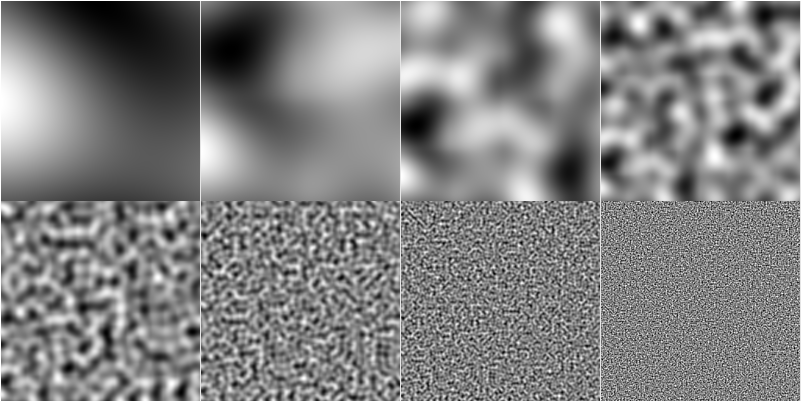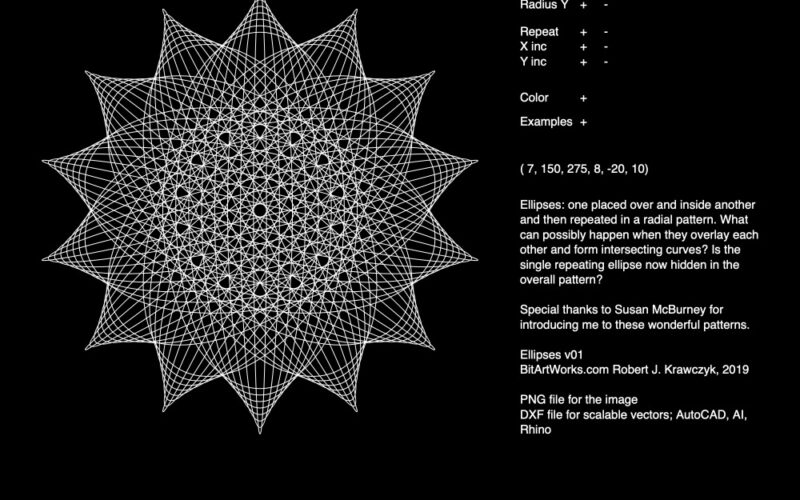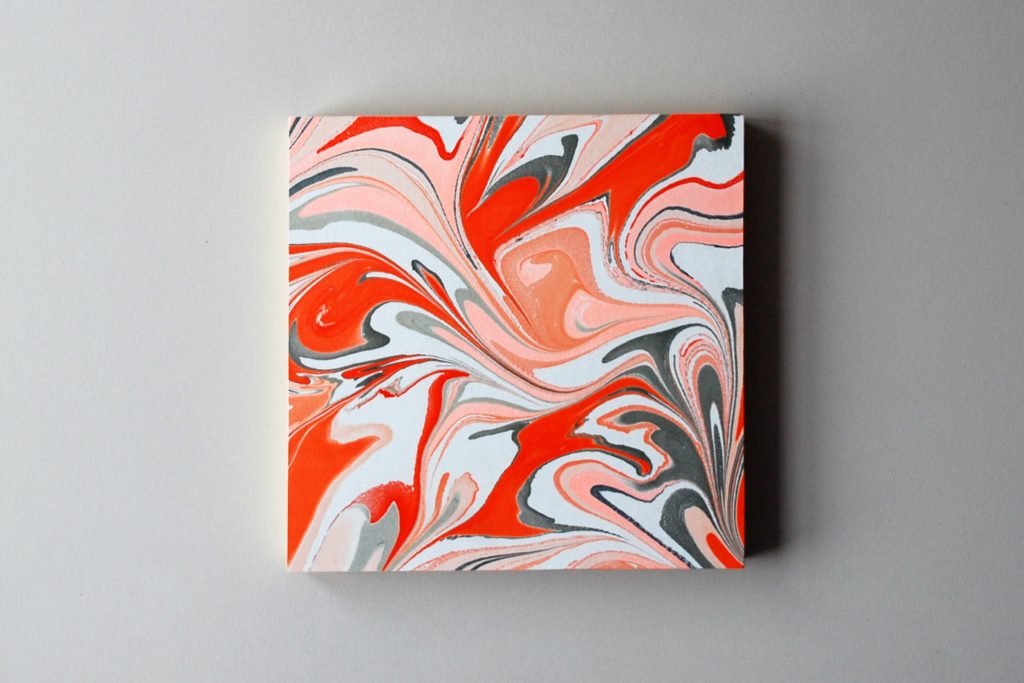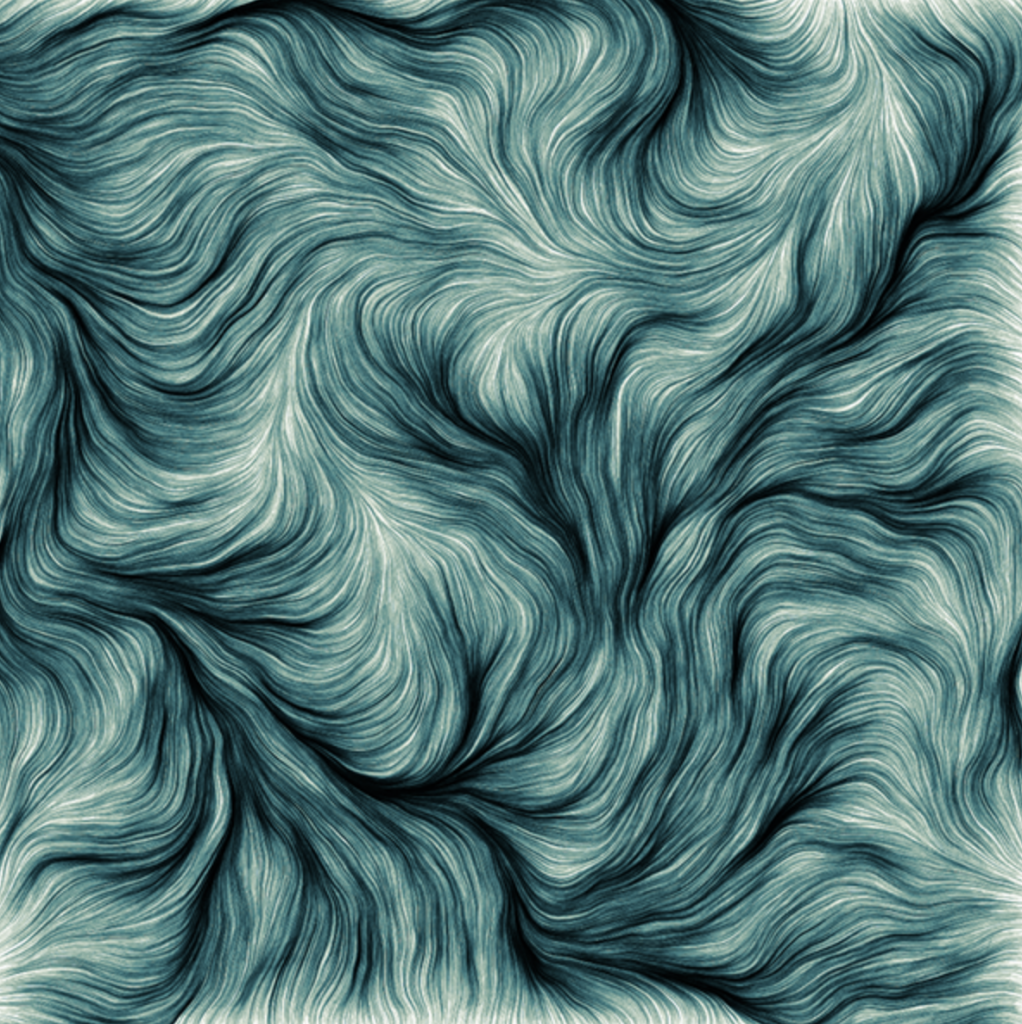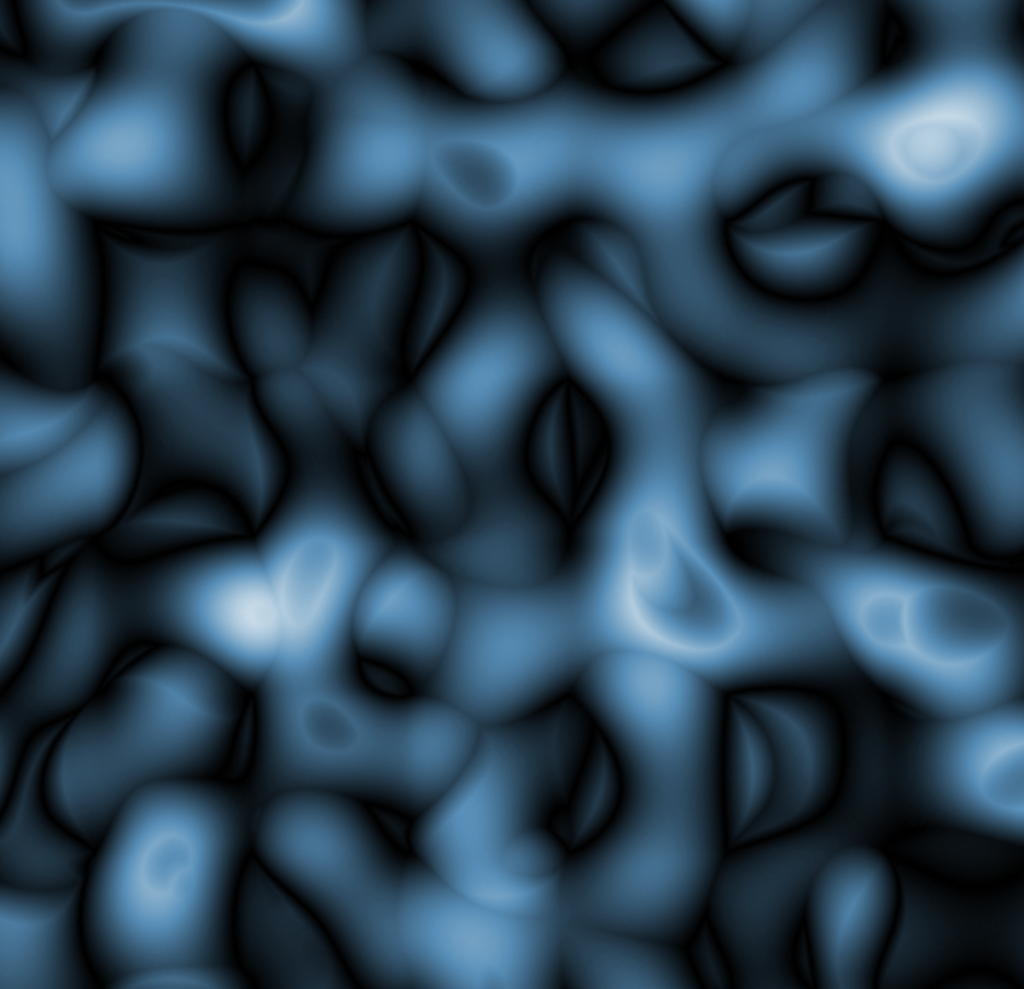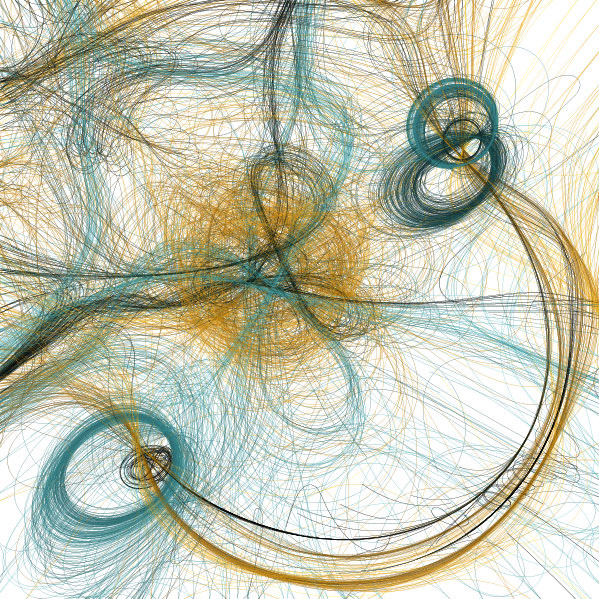
Casey Reas is a generative artist and owns a website that is filled with variety of different types of generative art but the ones that I was most drawn into was Path and Tissues. They are both executed and created in a similar technique and are built around the ideas of neuroanatomist Valentino Braitenberg. They are a series of prints and images that documents the movement of synthetic neural systems. Each line in the image reveals the history of one system’s movement as it navigates its environment. I love these projects because of the textures its creating randomly and also the rapid movement it captures. I think the idea behind the works are executed very well. I personally admire Path a little bit more than Tissues because of its’ color palette. The combination of both cool and warm color makes the piece more livid and interesting. There is no end to observing these prints because there are so many details and “paths” that leads the audience into, but I love that about Path and Tissues. Rea’s website contains many more generative arts and prints that are very admirably and interesting.
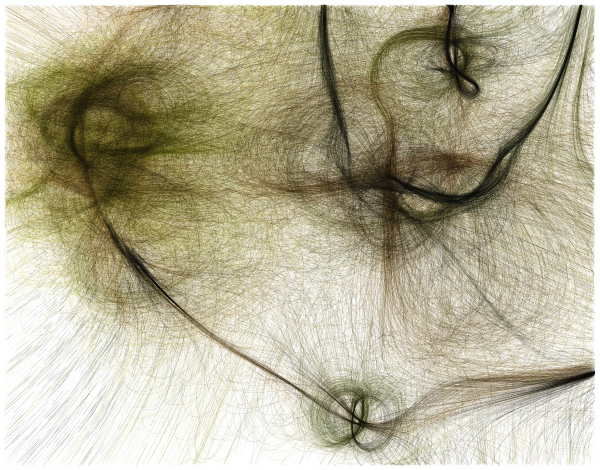
![[OLD FALL 2019] 15-104 • Introduction to Computing for Creative Practice](../../../../wp-content/uploads/2020/08/stop-banner.png)
